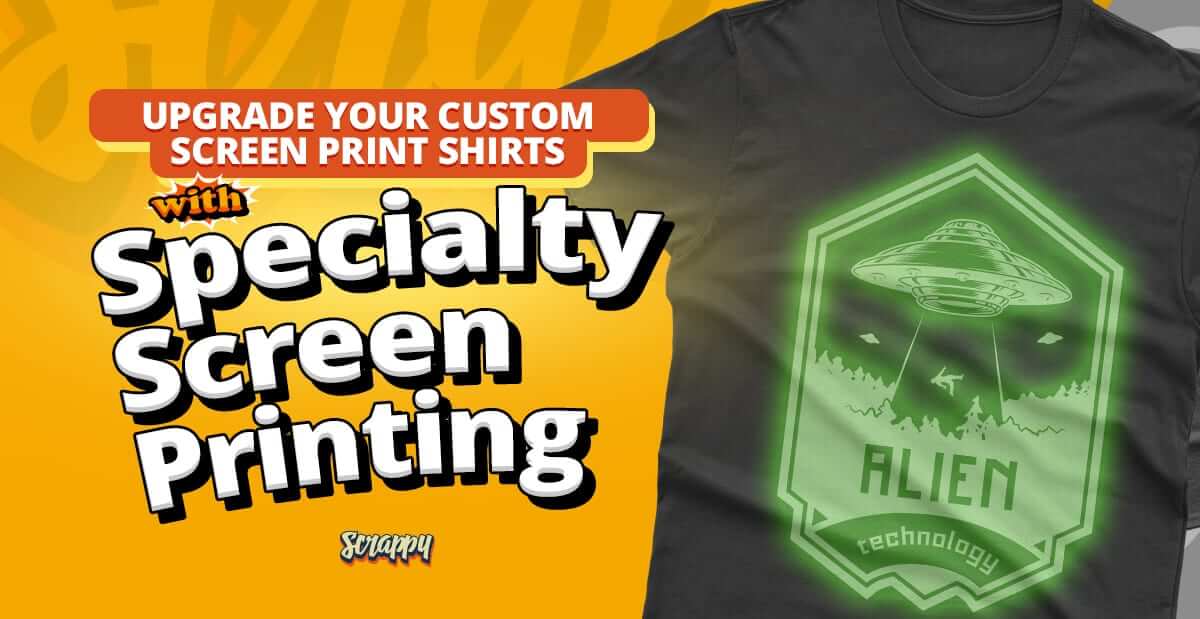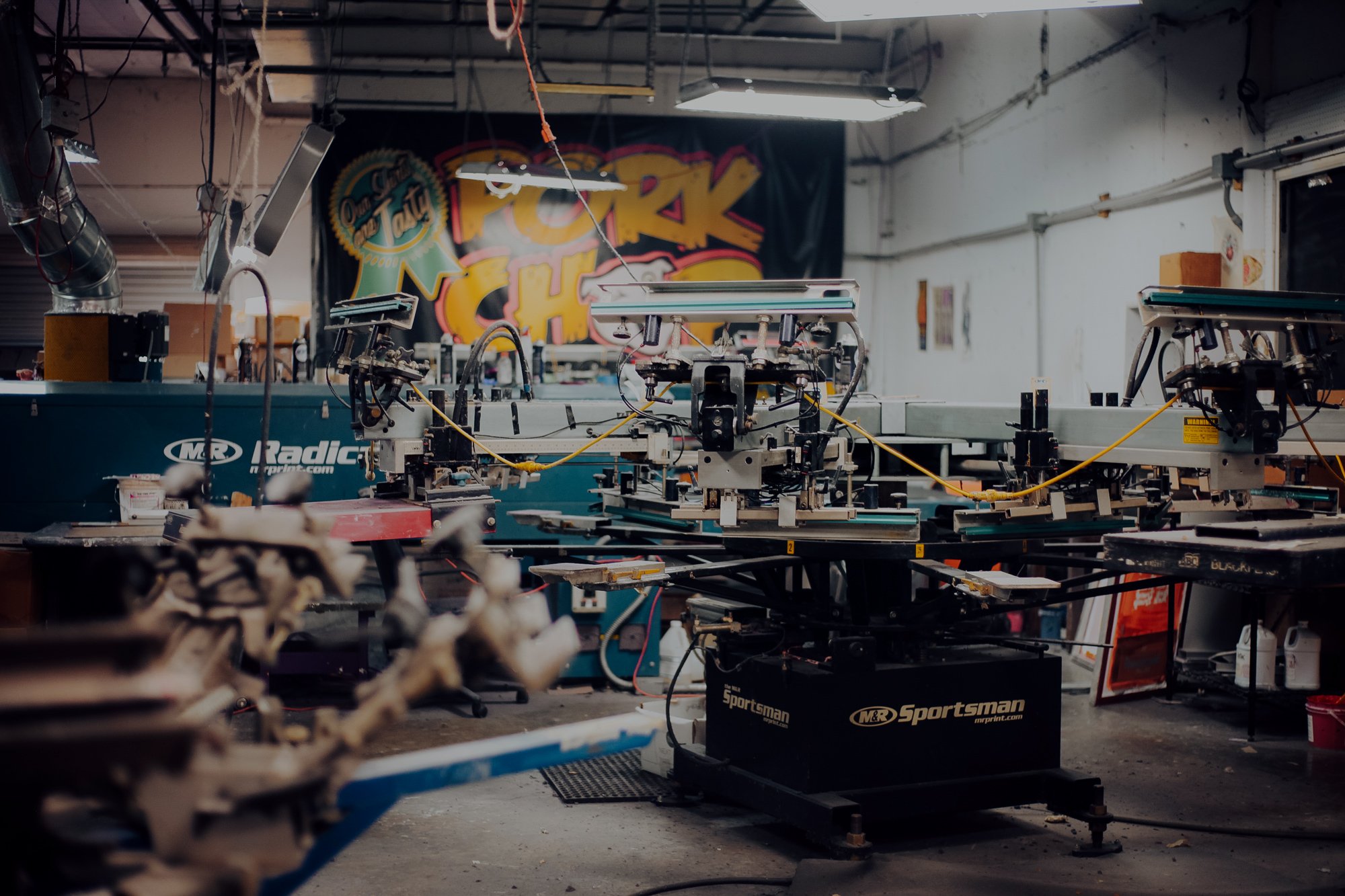Affordable Screen Printing Kit for Home Use
Affordable Screen Printing Kit for Home Use
Blog Article
Screen Printing Uncovered: Whatever You Required to Learn About Tee and Garment Printing Methods
Screen printing is a remarkable method that integrates art with technique, supplying limitless possibilities for creativity. Prepared to check out the essential aspects that make display publishing an art form?
The Fundamentals of Display Printing: How It Functions
When you plunge into screen printing, you'll discover it's both an art and a scientific research. At its core, screen printing involves producing a pattern, or screen, that allows ink to pass with just in details areas (screen printing kit). You start by choosing your design and preparing your display with a light-sensitive emulsion. Once you expose this emulsion to light, it solidifies, leaving your style as an unfavorable room.
Following, you'll mix your inks and prepare your printing surface area. Placement the screen over the fabric, after that use a squeegee to press ink with the display onto the garment. This process calls for precision, as you desire clear, vibrant prints. After printing, you'll heal the ink with heat, ensuring it adheres to the fabric and lasts through cleans. Each step is necessary, and understanding them will elevate your screen printing skills, changing straightforward garments right into distinct, meaningful pieces.
Kinds Of Screen Printing Methods
As soon as you realize the fundamentals of screen printing, it's time to discover the various techniques that can raise your styles. One prominent technique is traditional display printing, where ink is pressed with a stenciled display. This technique is terrific for vibrant, vivid shades. There's water-based ink printing, which supplies a softer feel and is green, but it needs a different approach to treating.
Another choice is plastisol printing, recognized for its durability and vibrant colors, making it a favorite for lots of brand names. Experiment with halftone printing to produce slope effects and complex layouts.
Necessary Devices for Screen Printing
To attain sensational lead to screen printing, having the ideal devices is basic. You'll need a tough display printing structure, which holds the mesh that moves your style onto the garment. Next off, buy high-quality mops; these are important for applying ink evenly across the display. You'll additionally need a great direct exposure unit to create your displays, along with a washout cubicle for cleansing them after use. A reliable heat resource, like a conveyor clothes dryer or warm press, is important for curing your prints to ensure durability. Don't fail to remember an appropriate office, outfitted with tables and storage for your products. Ultimately, safety equipment, such as gloves and masks, will certainly keep you safe from chemicals and inks. With the right tools, you'll be well on your method to producing professional-quality prints.
Picking the Right Inks and Products
When choosing inks and products for display printing, you need to think about the kind of ink that works best for your job. Think of textile compatibility to ensure your styles look terrific and last lengthy. Also, check out environment-friendly ink options to make your printing procedure extra lasting.
Kinds of Display Inks
Picking the appropriate display ink is essential for attaining vivid, resilient prints that meet your project's requirements. There are several types of screen inks to analyze. Plastisol ink is popular for its flexibility and simplicity of usage, giving excellent shade opacity on dark fabrics. Water-based ink, on the other hand, offers a softer feel and is environmentally friendly, making it perfect for those wanting to reduce their environmental effect. Discharge inks remove dye from the material, leading to a soft, classic appearance however require certain handling. Specialty inks, such as metallic or glow-in-the-dark, can include special results to your designs. Evaluate your task demands and select the ink that lines up best with your preferred end result.

Textile Compatibility Considerations
Comprehending textile compatibility is crucial for attaining high-quality screen prints, particularly given that various materials react uniquely to numerous inks. When picking inks, consider the textile type-- cotton, polyester, or blends. For cotton, water-based inks function well, offering gentleness and breathability. Polyester, on the various other hand, commonly requires plastisol inks for much better bond and dynamic shades. You may require to utilize a combination of both types if you're printing on blends. Constantly test your inks on sample fabric to assure they stick appropriately and keep color honesty. Furthermore, maintain in mind that textile weight and structure can impact the last result, so choosing the ideal ink and material combo is crucial for your project's success.
Eco-Friendly Ink Options
Green inks are ending up being a popular selection for display printers who want to lessen their environmental effect while preserving quality. When picking inks, take into consideration water-based inks, which are much less damaging and easier to cleanse up contrasted to typical solvents.
In addition, try to find inks made from sustainable resources, such as soy or vegetable-based choices. By selecting the right inks and materials, you'll not just develop spectacular layouts however likewise add to a more sustainable printing process. Make the button, and your prints will certainly reflect your commitment to the environment!
Preparing Your Style for Screen Printing

File Layout Demands
To ensure your design looks dynamic and sharp on fabric, you'll need to pay close interest to file layout demands for display printing. Make certain your layout has a transparent background to prevent unwanted white edges on your prints. Keep color settings in mind; CMYK is standard for display printing, so transform your RGB creates as necessary.
Shade Splitting Up Techniques
Color splitting up is an essential step in preparing your style for screen printing, and understanding it can considerably boost your print high quality. You'll need to damage your design right into specific colors, as each shade calls for a different screen throughout printing. This precision not just guarantees accurate shade representation however additionally enhances the printing procedure.
Resolution and Size
Accomplishing the most effective outcomes in display printing starts with ensuring your style has the best resolution and dimension. Ideally, your artwork must be at the very least 300 DPI (dots per inch) for sharp, clear prints. If you make use of reduced resolution, your final product could look less than professional and pixelated.
When it concerns dimension, think about the dimensions of your print area. Style your art work to match the last print dimension, ideally creating it in the real dimensions you'll be publishing. This method, you'll prevent any unexpected scaling issues.
Constantly inspect your style in both vector and raster layouts. Vector graphics can be scaled without losing quality, making them perfect for screen printing. Preparing correctly will ensure your style looks remarkable on every garment!
Step-by-Step Screen Printing Refine
Display printing is a vibrant procedure that allows you to create dynamic layouts on different surfaces. To start, you'll require a display, emulsion, and your picked ink. Initially, prepare your screen by cleaning it extensively. Next off, use the emulsion uniformly and allow it completely dry in a dark location. When dry, expose your screen to light with your layout put on it, which will set the emulsion where the light hits, producing a pattern - screen printing kit.
After rinsing the basics unexposed solution, your screen prepares. Set it up on your printing surface and align your garment under it. Put ink onto the screen and use a squeegee to push the ink via the pattern onto the material. Lift the screen meticulously and allow the print dry. Treat the ink making use of warmth to assure resilience. That's it! You've efficiently screen printed your design.
Tips for Effective Display Printing Projects
While you're diving right into your display printing projects, bear in mind that prep work is essential to success. Begin by collecting all your materials-- inks, displays, mops, and garments. A tidy work space helps prevent unwanted mistakes, so neat up prior to you begin.
Next, confirm your art work is high-resolution and appropriately sized for your garment. Check your display for proper direct exposure and tidy it extensively to avoid smudges. When mixing your inks, adhere to the producer's standards to accomplish the ideal consistency.
During printing, apply also stress with your squeegee for consistent results. Don't hurry; take your time to validate each print satisfies your criteria. After printing, let your garments completely dry totally prior to handling or packaging them.
Finally, constantly maintain an example of your help future referral. In this manner, you can examine your development and boost your methods with time. Satisfied printing!

Often Asked Concerns
How much time Does It Take to Set up a Display Printing Job?
Establishing a screen printing task generally takes around 30 minutes to an hour. You'll prepare the screens, mix inks, and adjust journalism. The moment differs based on intricacy and experience, so remain organized!
Can I Print on Various Fabric Enters Utilizing the Same Method?
Yes, you can print on different fabric kinds making use of the exact same method, yet you'll need to change your inks and setups. Some textiles soak up ink in a different way, so experimenting guarantees the ideal outcomes for each material.
What Are Typical Mistakes to Avoid in Display Printing?
When screen printing, stay clear of usual errors like using the incorrect ink, neglecting appropriate exposure times, or avoiding pre-press checks. Constantly evaluate your arrangement and preserve tidy displays to guarantee top quality results each time.
How Can I Effectively Tidy and Maintain My Display Printing Equipment?
To correctly clean and keep your display printing devices, you should routinely clean displays with appropriate solvents, inspect mops for wear, and find out this here ensure all tools are saved dust-free and completely dry. Consistency prevents pricey repair services and improves efficiency.
Is Display Printing Eco Friendly Compared to Other Approaches?
Display printing can be extra eco-friendly than various other approaches, especially if you make use of eco-conscious products and water-based inks. By picking sustainable products and techniques, you decrease waste and decrease your effect on the earth.
Screen Printing Uncovered: Everything You Need to Know About Tee and Garment Printing Techniques
At its core, display printing includes developing a stencil, or screen, that enables ink to pass via just in details locations. Placement the display over the material, after that use a squeegee to push ink through the display onto the garment. One prominent approach is typical screen printing, where ink is pushed this website via a stenciled screen.When choosing inks and materials for screen printing, you require to take right into account the kind of ink that functions ideal for your project.
Report this page